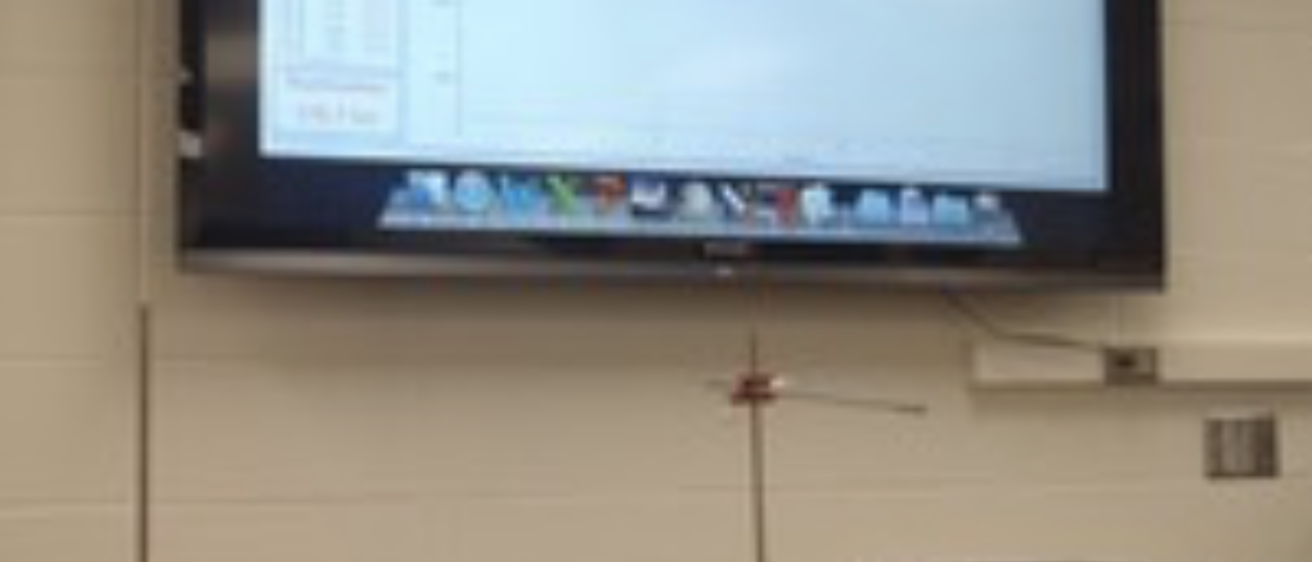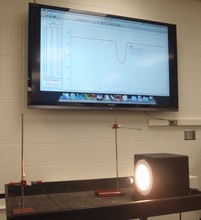
Breadcrumb
- Home
- Labs
- Advanced Labs
- Exoplanets
- Part 1: Transit Simulation
Part 1: Transit Simulation
Demos from UNL: UNL Exoplanet Transit Simulator

Exoplanet Demonstration
Your team will now use a lab demonstration to predict how changing the size of a model exoplanet will change the ammount of light blocked from a model star. You will see a bright light source, which represents a star, and a small sphere that will pass in front of the bright source and block light, which represents an exoplanet orbiting the star and eclipsing it. The light from the demo is collected by a photosensor, which represents an observer on Earth. The readout from the photosensor is plotted on a large display, demonstrating the change in brightness as an exoplanet orbits its host star.
After seeing the first demonstration, with your team, try to predict what the result will be if another sphere of half the diameter of the first sphere is moved in front of the light source. Share your conclusions and reasoning with the rest of the class. Then, the demonstration will be repeated using the lab materials including this sphere that is half the diameter of the first sphere. Does the result seem to verify your reasoning?
Eclipse Depth and Exoplanet Size
Use this UNL Exoplanet Transit Simulator tool to determine how the size of an exoplanet relates to the depth of the exoplanet eclipse. This tool simulates transits for many sizes of stars and exoplanets. For a few different scenarios from the tool, you'll want to record 1. the radius of the planet relative to its parent star, and 2. how much light is blocked when the planet passes in front of the star, where maximum, unblocked light is 1.0. What is the general rule that relates these two numbers?
Exoplanets: Part 3: Transit Simulation